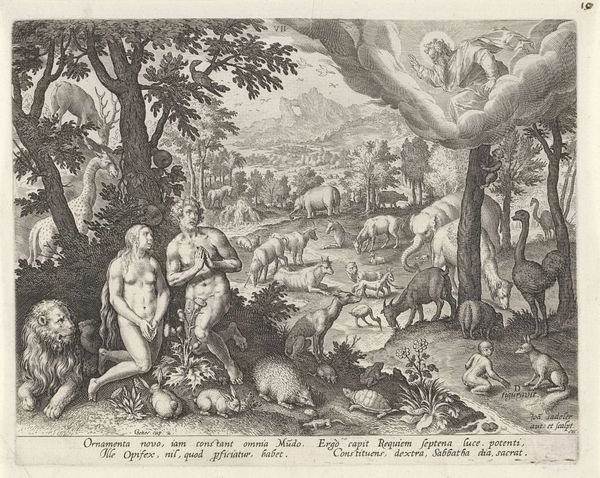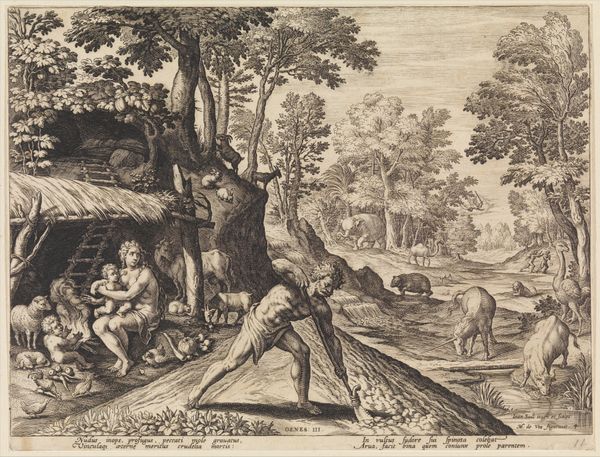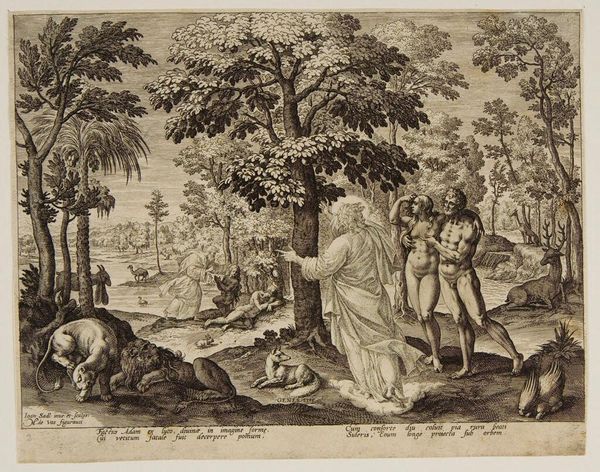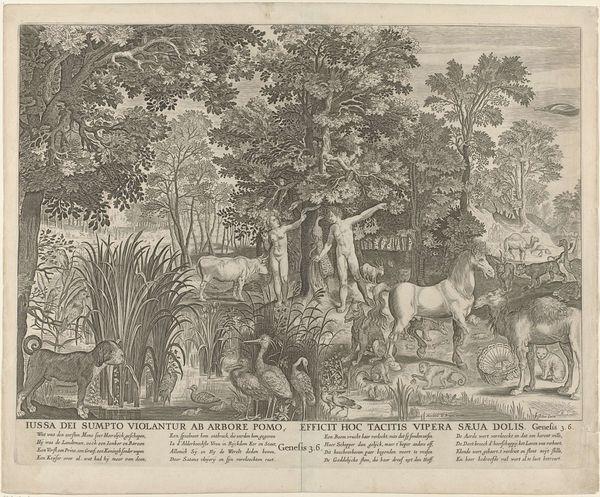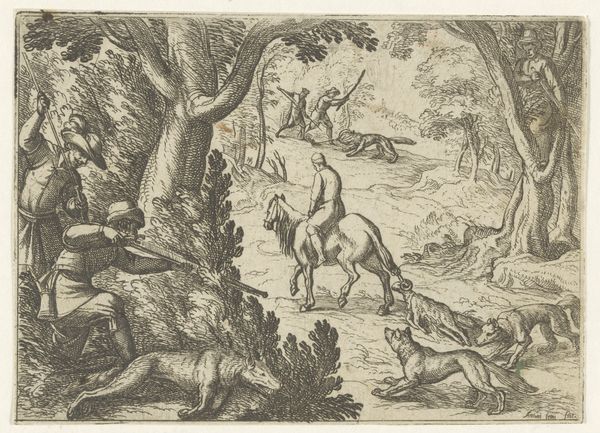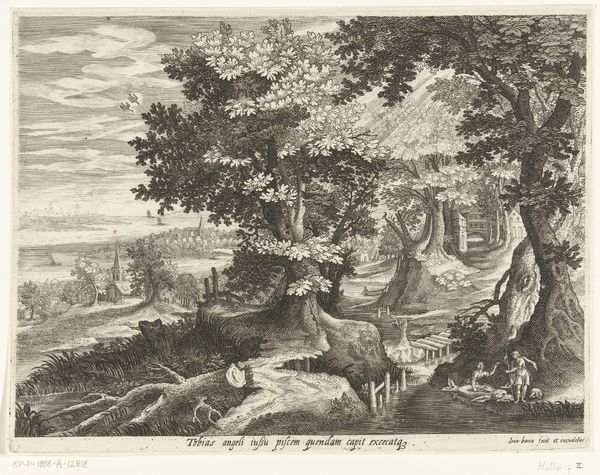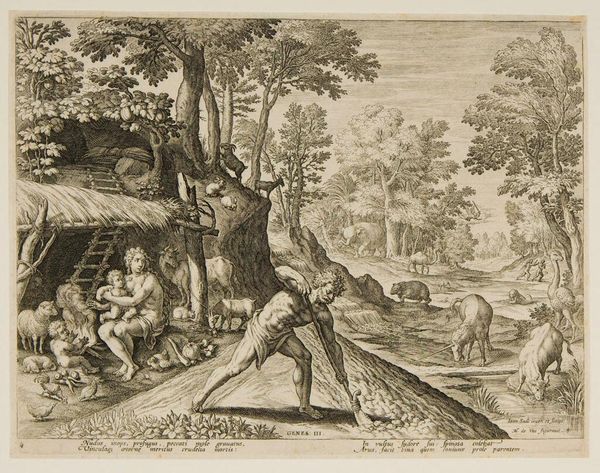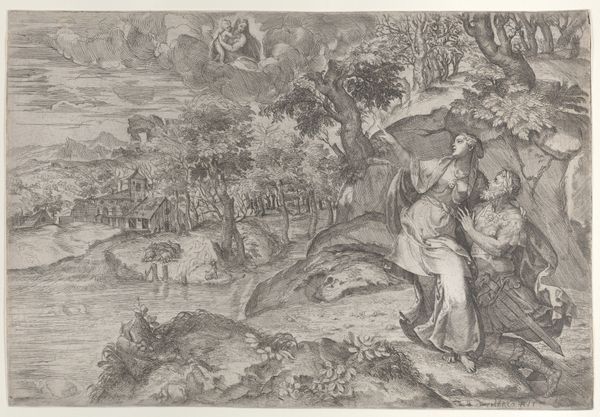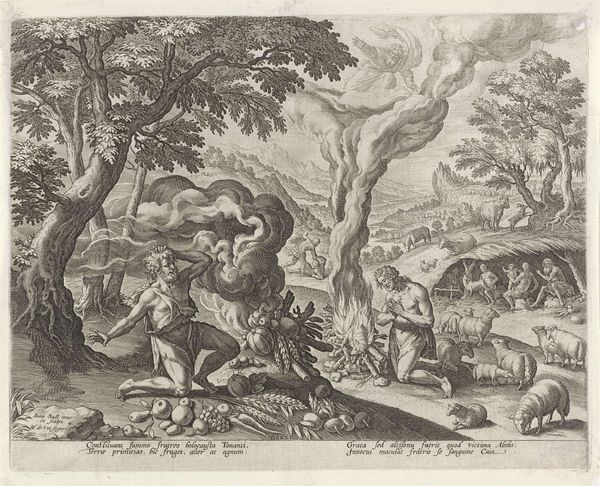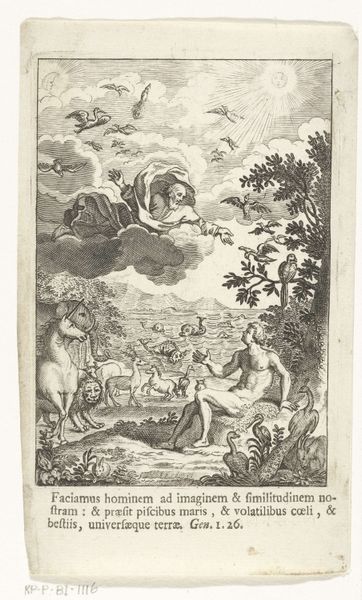
print, engraving
# print
#
landscape
#
figuration
#
11_renaissance
#
history-painting
#
northern-renaissance
#
engraving
Dimensions: height 205 mm, width 267 mm
Copyright: Rijks Museum: Open Domain
Editor: So, here we have Johann Sadeler's engraving, "Adam and Eve in Paradise," from 1583. There's a lot going on—lush landscape, animals, classical nudes. It’s so detailed; the texture and tonal variation are really striking, despite being just black lines on white. What sort of cultural memories might this image evoke? Curator: Indeed, a potent tableau. Consider how the symbol of paradise resonates through centuries and faiths. The garden, the nude figures, the abundance of nature... these are enduring motifs. But what's being depicted is a pivotal moment, just after the Fall. Look at the composition. God is pointing, perhaps accusingly. How does that gesture resonate with you? Editor: It feels…stern, I suppose. But there’s also a certain melancholy in the overall scene. They’re surrounded by beauty, but everything's about to change. What do the animals signify? Curator: Ah, that's the fascinating layer. The lion, the deer, the various creatures-- they predate human consciousness of good and evil. The engraving captures an instant of disruption in that harmony, because now mortality is coming to Paradise. What effect does knowing it's an engraving have on how you read those symbols? Editor: Hmm. Maybe the detail of the animals feels almost scientific, like a classification. Yet their idealised forms recall antique sculpture and mythology, too. Curator: Precisely. So this image becomes a crossroads. Religious narrative meets classical form. The engraving medium itself becomes part of this complex conversation because it makes the idea so repeatable, so accessible. Do you agree that the wide dissemination affected its impact and influence? Editor: I think so. The print allows the imagery of the Fall to spread and solidify over time. That balance between familiar and foreign – between memory and method – has deepened my understanding of the cultural significance attached to it. Curator: It speaks to the strength of visual symbols and how cultural memory is continually reshaped and transferred through art.
Comments
No comments
Be the first to comment and join the conversation on the ultimate creative platform.
